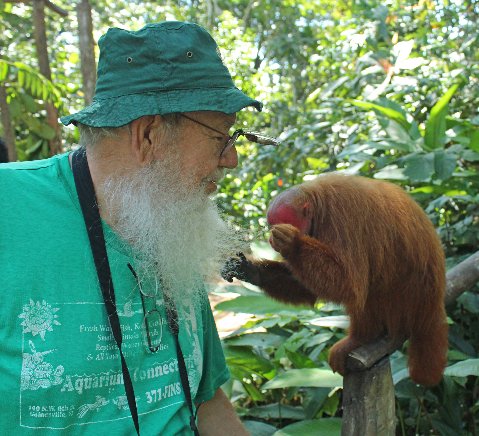There are several snake species in Amazonia that undergo extreme color changes as they progress from hatchling/neonate to adulthood.

The orange to green color changes of two, the two species of emerald tree boa, are well known. However, there is a lesser known species, the rusty whipsnake,
Chironius scurrulus (a colubrine) about which you seldom hear, that undergoes color changes as great as, but exactly the opposite of, those of the boas.
This slender snake, adult at over six feet in length, is leaf green and largely arboreal as a hatchling. Predominantly terrestrial (actually a largely river-edge, frog eater that swims well and fast) it is rusty brown as an adult. Between these two color extremes the snake appears more faded, a rather nondescript greenish-gray and then grayish-red.
It is a species that we always enjoy finding on our Amazonian Peru tours.
But enough talk. Meet the rusty whipsnake.
The green of the hatchling fades quickly with growth.

This is an adult rusty whipsnake.

 Author, photographer, and columnist Richard Bartlett is one of the most prolific writers on herpetological subjects in the 20th century. With hundreds of books and articles to their credit, Richard and his wife Pat have spent over four decades documenting reptiles both in the field and in captivity. For a list of their current titles, please visit their page in our bookstore. Author, photographer, and columnist Richard Bartlett is one of the most prolific writers on herpetological subjects in the 20th century. With hundreds of books and articles to their credit, Richard and his wife Pat have spent over four decades documenting reptiles both in the field and in captivity. For a list of their current titles, please visit their page in our bookstore. |




To prevent automated Bots from commentspamming, please enter the string you see in the image below in the appropriate input box. Your comment will only be submitted if the strings match. Please ensure that your browser supports and accepts cookies, or your comment cannot be verified correctly.